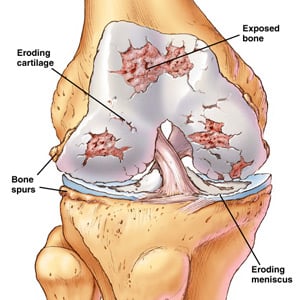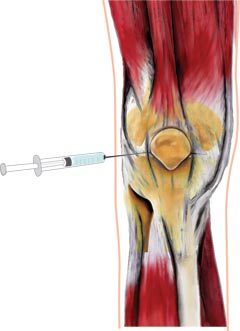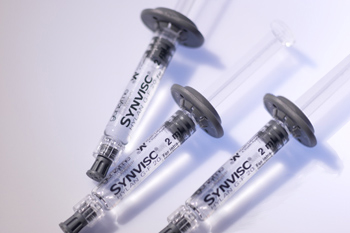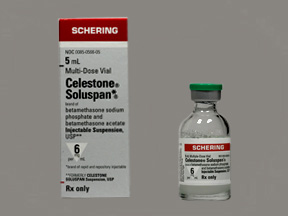Injections for knees
Degenerative Knee Joint

Injections for Knees: A Promising Solution for Joint Pain Relief
The human knee is a complex joint that provides mobility and stability, allowing us to perform various activities. However, knee problems can arise due to age, injury, or underlying medical conditions, causing pain and limiting mobility. When conservative treatments fail to alleviate the discomfort, injections for knees can offer a promising solution. In this article, we'll explore different types of knee injections, their effectiveness, benefits, considerations, and the overall injection process.
Common Knee Problems
Before diving into the specifics of injections, let's understand some common knee problems that can lead individuals to seek alternative treatment options. Osteoarthritis, the most prevalent form of arthritis, causes the protective cartilage in the knee joint to deteriorate over time. Rheumatoid arthritis, an autoimmune disorder, can also affect the knees, leading to pain, swelling, and stiffness. Additionally, bursitis, the inflammation of the fluid-filled sacs that cushion the knee joint, can cause discomfort and mobility issues.
Non-Surgical Treatment Options
Before considering injections, individuals experiencing knee pain often explore non-surgical treatment options. These may include physical therapy to strengthen the surrounding muscles and improve joint stability. Medications such as nonsteroidal anti-inflammatory drugs (NSAIDs) or analgesics can provide temporary relief. Assistive devices like braces or crutches can also aid in reducing stress on the knees and promoting healing.
Injections for Knee Pain
When non-surgical treatments fail to provide adequate relief, injections can be an effective alternative for managing knee pain. There are several types of injections commonly used, including corticosteroid injections, hyaluronic acid injections, platelet-rich plasma (PRP) injections, and stem cell injections.
Corticosteroid Injections
Corticosteroid injections involve the administration of a powerful anti-inflammatory medication directly into the knee joint. This type of injection aims to reduce inflammation, alleviate pain, and improve mobility. While corticosteroid injections can provide immediate relief, their effects are typically temporary and may require repeat injections over time.
Hyaluronic Acid Injections
Hyaluronic acid injections, also known as viscosupplementation, involve injecting a gel-like substance into the knee joint. This injection aims to supplement the natural hyaluronic acid present in the joint fluid, providing lubrication and shock absorption. Hyaluronic acid injections can help reduce pain, improve joint function, and potentially delay the need for surgical intervention.
Platelet-Rich Plasma (PRP) Injections
Platelet-rich plasma injections involve drawing a small sample of the patient's blood, processing it to concentrate the platelets, and injecting the resulting plasma into the knee joint. Platelets contain growth factors that aid in tissue repair and regeneration. PRP injections aim to promote healing, reduce inflammation, and alleviate pain.
Stem Cell Injections
Stem cell injections utilize the patient's own stem cells or donor cells to promote tissue regeneration and repair. These injections have shown promise in stimulating the growth of new cartilage and reducing inflammation in the knee joint. Stem cell injections can potentially improve pain and function in individuals with knee osteoarthritis or other knee conditions.
Knee Joint Injection

Knee joint Injection
Knee Joint Injection with Regular synvisc

Knee Joint Injection

Effectiveness and Benefits of Injections
Injections for knees offer several benefits and can be highly effective in managing knee pain and improving joint function.
Pain Relief: One of the primary goals of knee injections is to alleviate pain. Corticosteroid injections, in particular, can provide quick and significant pain relief, allowing individuals to engage in activities they may have avoided due to discomfort. Other injections, such as hyaluronic acid, PRP, and stem cell injections, may also help reduce pain, although their effects may take longer to manifest.
Improved Joint Function: Knee injections can enhance joint function by reducing inflammation, promoting tissue repair, and increasing lubrication within the joint. This improvement in function can translate into increased mobility, reduced stiffness, and the ability to perform daily activities with greater ease.
Delaying the Need for Surgery: Injections can potentially postpone or eliminate the need for surgical intervention in some cases. By providing pain relief and improving joint function, individuals may be able to manage their knee condition effectively without undergoing invasive procedures.
Considerations and Side Effects
While knee injections can offer significant benefits, it's essential to consider potential side effects and individual factors before proceeding with a specific type of injection.
Allergic Reactions: Some individuals may be allergic to certain substances used in knee injections. It's crucial to inform the healthcare professional about any known allergies to ensure the appropriate injection is selected.
Infection Risk: Although rare, there is a small risk of infection associated with any injection. Ensuring proper sterilization techniques and using sterile equipment during the injection process can minimize this risk.
Temporary Increase in Pain: It's important to note that some individuals may experience a temporary increase in pain following the injection. This is usually a transient side effect and should subside within a few days.
Choosing the Right Injection
Selecting the most suitable knee injection depends on various factors, including the individual's specific knee condition, medical history, and preferences. Consulting with a healthcare professional specializing in orthopedics or rheumatology is crucial to determine the best course of action.
The Injection Process
Understanding the injection process can help individuals prepare for the procedure and know what to expect.
Preparation: Before the injection, the healthcare professional will assess the knee joint, review medical history, and discuss any concerns. They may also provide instructions on fasting or stopping certain medications if necessary.
Administration: The injection is typically performed in a clinical setting. The healthcare professional will clean the injection site, administer a local anesthetic if needed, and accurately inject the selected medication into the knee joint using a syringe.
Aftercare: Following the injection, the healthcare professional may provide specific aftercare instructions, which may include avoiding strenuous activities, applying ice or heat to the knee, and taking over-the-counter pain relievers if allowed.
Recovery and Results
Recovery from knee injections is generally quick, and individuals can often resume their normal activities shortly after the procedure. However, it's essential to follow the healthcare professional's recommendations for post-injection care to optimize results. The timeframe for experiencing the full benefits of knee injections can vary depending on the type of injection and the individual's response.
Knee pain can significantly impact an individual's quality of life, limiting their mobility and causing discomfort. When conservative treatments fail to provide relief, injections for knees offer a promising solution. From corticosteroid injections to hyaluronic acid, platelet-rich plasma, and stem cell injections, these treatments can provide pain relief, improve joint function, and potentially delay the need for surgery. By considering individual factors, consulting with healthcare professionals, and understanding the injection process, individuals can make informed decisions regarding the most suitable injection for their specific knee condition.
FAQs
1. Are knee injections painful?
Knee injections are generally well-tolerated, with most individuals experiencing minimal discomfort. The healthcare professional may administer a local anesthetic to numb the injection site, further reducing any potential pain.
2. How long do the effects of knee injections last?
The duration of the effects can vary depending on the type of injection. Corticosteroid injections typically provide temporary relief lasting a few weeks to several months. Hyaluronic acid injections may last several months to a year. PRP and stem cell injections may have longer-lasting effects, potentially providing relief for a year or more.
3. Can knee injections cure osteoarthritis?
While knee injections cannot cure osteoarthritis or underlying knee conditions, they can effectively manage pain, improve joint function, and potentially delay the need for surgery.
4. Are there any alternatives to knee injections?
Yes, there are alternative treatments for knee pain, including physical therapy, medications, assistive devices, and surgical options. The choice of treatment depends on the individual's specific condition and the recommendations of healthcare professionals.
5. Can I resume physical activities after knee injections?
In most cases, individuals can gradually resume physical activities after knee injections. However, it's important to follow the healthcare professional's guidance and recommendations for post-injection care to avoid any complications or setbacks.
Sources
- Mayo Clinic - www.mayoclinic.org
- WebMD - www.webmd.com
- American Academy of Orthopaedic Surgeons - www.aaos.org
- Arthritis Foundation - www.arthritis.org
- National Institute of Arthritis and Musculoskeletal and Skin Diseases - www.niams.nih.gov






